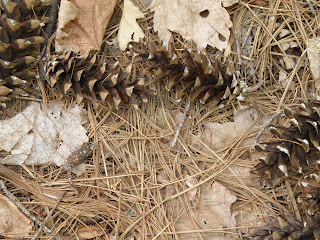I returned home Friday evening after two long weeks away. My feeders and birdbaths were empty so I promptly cleaned and refilled them. As in prior absences, it takes several days for the birds and squirrels to return to my feeders. I am one of many in the neighborhood that provide food and water for the wildlife so once my supplies ran out, everyone moved on to other homes. By late Saturday evening however, the chickadees, nuthatches and sparrows returned, noshing on the thistle and black oil sunflower seeds.
Unlike the seed tubes, the hummingbird feeder had remained untouched during my absence. I had refilled the water bottle with fresh sugar solution just before I left so I knew that I had had no visitors. Once again, I missed the departure of the ruby-throated hummingbirds on their long trip south. As one of the earliest winter migrating birds, the hummingbirds of Michigan travel south to Mexico, crossing the full 600 mile length of the Gulf. There they will remain until March when they begin their journey back to Michigan arriving by mid-May.
Hummingbirds are unique in the bird world in their ability to hover, fly backwards and up and down. Their wing anatomy allows them to rotate their shoulder joint so that the wing can completely turn over creating fore stroke and backstroke movements. During backward movement, the hummingbird positions its body more upright, reducing the wing incline to almost horizontal that allows the bird to draw its head downward for easier access to the flowers’ nectar. [Science Daily, September 30, 2012 -http://www.sciencedaily.com/releases/2012/09/120927091924.htm?utm_source=feedburner&utm_medium=email&utm_campaign=Feed%3A+sciencedaily%2Fplants_animals+%28ScienceDaily%3A+Plants+%26+Animals+News%29]
This past week, I received a link to a website where a birdwatcher photographed the life process of hummingbird chicks. I was amazed to learn that the eggs were only ½ inch in length and that the nest was barely longer than a toothpick. It was fascinating to see the development from naked chicks to fully feathered fledglings. To see the entire process from egg to independence, go to http://community-2.webtv.net/hotmail.com/verle33/HummingBirdNest/
As for my feeder, I will clean and refill it one more time just in case there are any hummingbirds remaining in the area. When the evening temperatures drop below freezing on a regular basis, I will store my feeder for the winter and wait patiently for the hummingbird’s return.



















